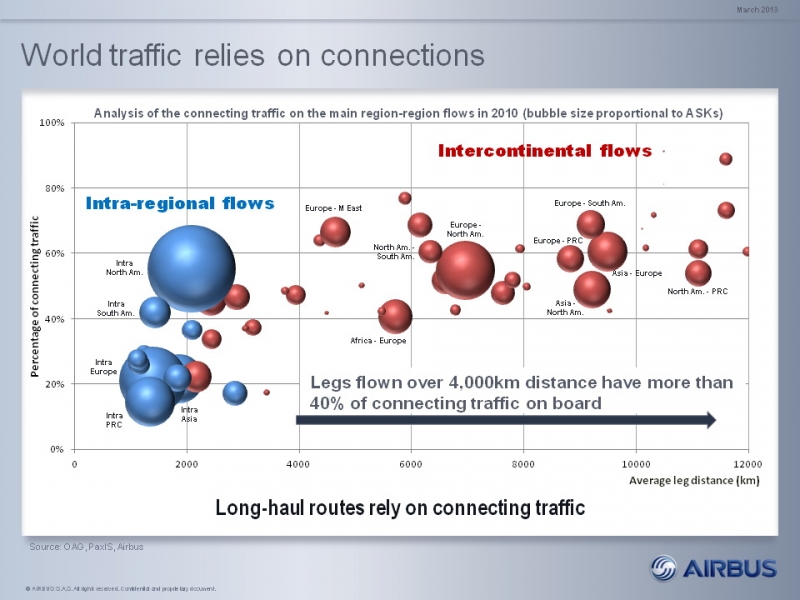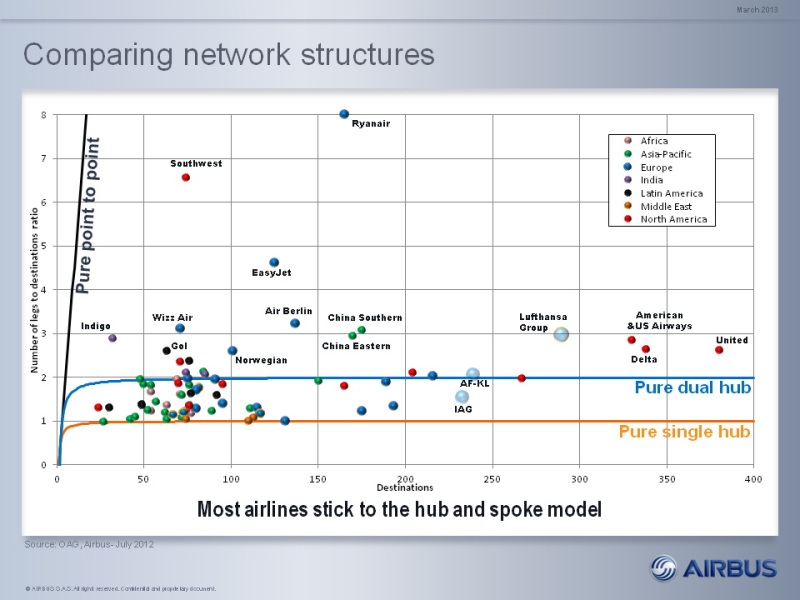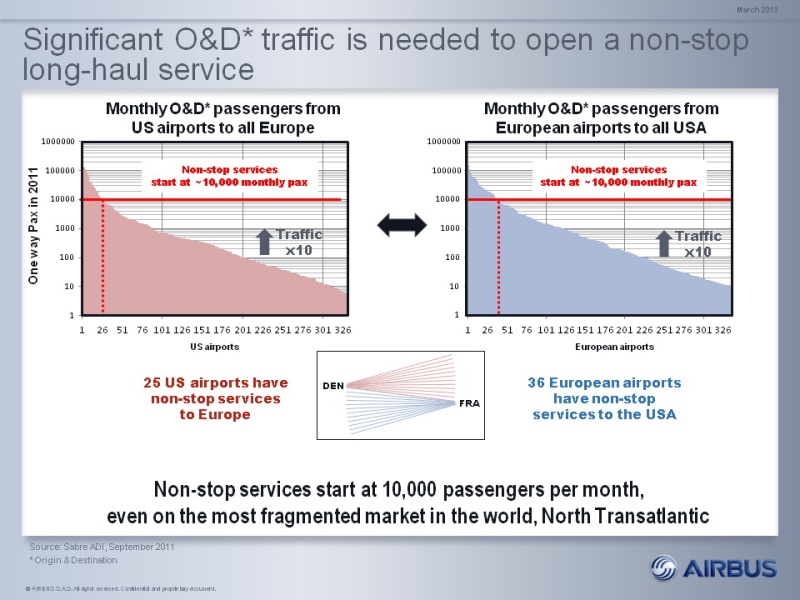

Market Trends
To Hub or Not to Hub?
Every airline and every market is different. Starting with this statement it is very difficult to specifically determine trends. Still, when considering a network expansion, network planners should ask themselves the same question: what gives more added value to my airline and my passengers?
Looking at all airlines worldwide we see that there are two ’pure‘ major network strategy models, the Point-to-Point (flights linking origin and destination flows) and the Hub-and-Spoke (traffic moves along spokes connected to the hub at the center). I purposely wrote ’pure‘ because when you look into details, most of the airlines today are between the two models even though many have been moving to the Hub-and-Spoke model as per the increasing number of origin and destinations compared to the decreasing number of legs...even in the case of low cost airlines! The possibility of capturing more markets with fewer flights is just too economically advantageous to be ignored.
The main difference between these two strategies is the importance you give to connecting traffic. When analyzing different traffic flows worldwide, there is an easily identifiable fact: legs flown over 4,000km have more than 40% connecting traffic on board (ex: Europe-South America up to 70%, but even on mature markets such as Europe-North America connecting represents up to 55%). Long haul flights rely on connecting traffic and therefore Hub-and-Spoke network structures are here to stay in the long term.
When looking at a long haul network expansion, most of the airlines have two main choices:
1. Adding capacity on existing routes, either by increasing frequencies or by increasing aircraft capacity
2. Adding new routes to the network
Adding frequencies to provide different scheduling alternatives to passengers (assuming daily service is reached as a minimum) sounds good...but we should not forget that the new frequency has to provide additional added value to passengers and to the airline. The first two unavoidable constraints for frequencies development is geography (time zone, flight time) and airport curfews. These two “out of the airline hands” constraints significantly limit the departure/arrival windows for a flight. If we add the specific catching hub wave of the airline and the fact that most passengers prefer to fly night flights it is not easy to find an alternative frequency with additional added value. In these cases adding capacity at the right time of the day can prove to be more valuable than adding frequencies.
Opening new routes is always an exciting exercise for network planners, but it has to be deeply studied as it usually carries more indirect costs associated to it. To open a route, a significant origin and destination demand has to exist. If we have a look into one of the most fragmented markets in the world, the Transatlantic, we find that at both ends, from point A to region B, a threshold of 10,000 passengers per month is the minimum amount of passengers required to open a non-stop service (actually, the same minimum is found for the Europe-Asia market). Developing secondary routes is therefore constrained by origin and destination traffic size, airline feeding capabilities and opportunities.
For more information contact:
Rocio Garrido de Prado
Head of Fleet Solutions
rocio.garrido-de-prado@airbus.com


